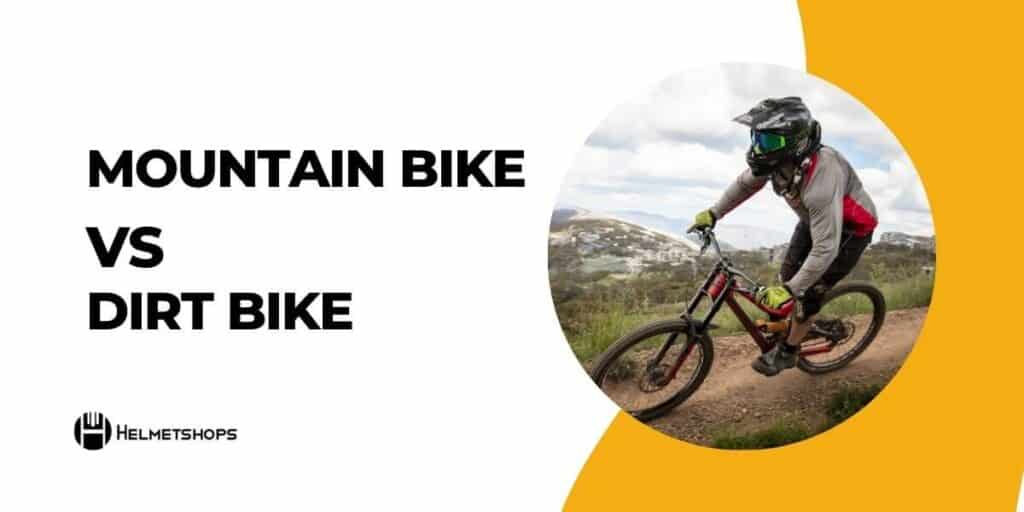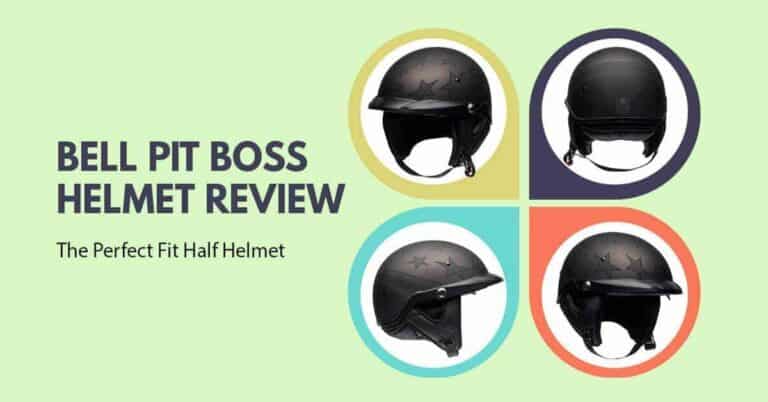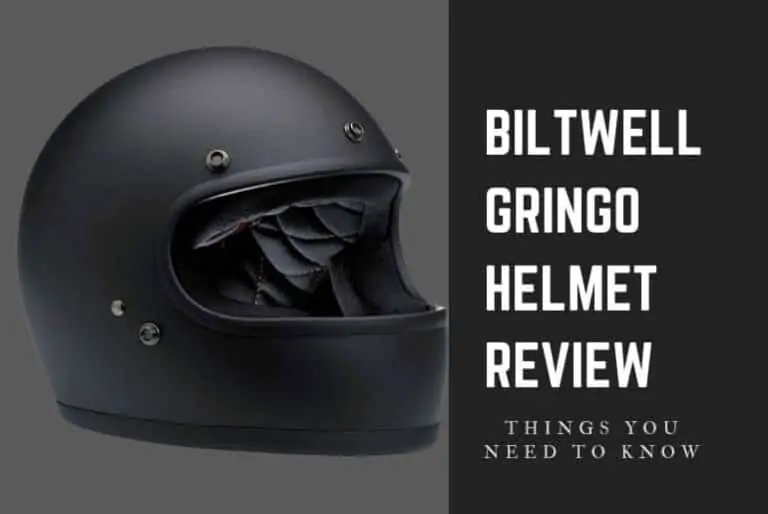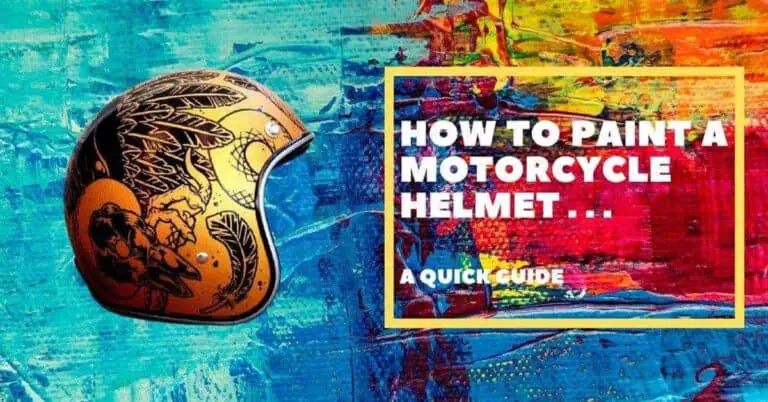Disclosure: As an Amazon Associate We earn from qualifying purchases.
Mountain bike helmets and dirt bike helmets are two different types of helmets designed for different purposes. Mountain bike helmets are specially crafted to offer a lightweight and well-ventilated experience, ensuring utmost comfort throughout those exhilarating long rides. On the other hand, dirt bike helmets are meticulously engineered to prioritize protection during thrilling, high-speed off-road adventures.
If you’re an experienced biker or avid enthusiast, it’s important to know the difference between a mountain bike helmet and a dirt bike helmet. Many people believe that these two types of helmets are interchangeable, but they are designed for very different uses.
A mountain bike helmet is built to be lightweight and provide plenty of ventilation to keep the rider cool during long rides. Conversely, dirt bike helmets are built for protection against the high speeds, jumps and other obstacles present on off-road terrain. The purpose of this article is to explore the differences between these two helmets, analyzing their intended purposes and unique features. Our ultimate objective is to help you decide which one is the most suitable for your needs.

The World Of Mountain Biking
Mountain biking is an adventurous outdoor activity that attracts people of all ages and backgrounds. It exhilarates riders with stunning views of nature, exciting climbs, and fast descents on a rugged terrain. But, with this excitement comes an increased risk of injuries when safety is not prioritized.
One of the most critical safety gear a mountain biker should have been a helmet. Two types of helmets are used for mountain biking – mountain bike helmets and dirt bike helmets. We explore the key differences between the two and why mountain bikers should choose a mountain bike helmet over a dirt bike helmet.
Types Of Mountain Bikes
Mountain bikes come in different types, each having unique features that make it suitable for specific riding conditions. These types include:
- Hardtail bikes – these bikes have a suspension fork on the front, but no rear suspension. They are lighter and less expensive than full-suspension bikes, making them ideal for cross-country riding and climbing.
- Full suspension bikes – these bikes have both front and rear suspension systems, offering better control and comfort on rough terrains. They are ideal for downhill riding and aggressive trail riding.
- Cross-country bikes – these bikes are similar to Hardtail bikes but designed for faster and smoother riding. They have wider tires, lighter frames, and are ideal for racing and long-distance riding.
Importance Of Helmets In Mountain Biking
Wearing a helmet is the most important safety precaution in mountain biking. A helmet protects the head from severe injuries in the event of a crash. It is, therefore, essential to wear the right helmet for mountain biking. Here are some reasons why helmets are important in mountain biking:
- Impact protection-helmets are designed to absorb the impact of a crash, reducing the severity of the injury.
- Prevent brain injuries – a helmet protects the brain from injuries that can affect memory, cognitive function, and coordination.
- Boosts confidence – wearing a helmet gives the rider confidence, knowing that they are protected in the event of a crash.
Safety Precautions For Mountain Bikers
Mountain biking can be dangerous, especially for those who do not take necessary safety precautions. Here are some safety precautions that mountain bikers should take:
- Wear protective gear- besides a helmet, mountain bikers should wear other protective gear like gloves, knee pads, and elbow pads.
- Know your skill level – riders should choose trails that match their skill level.
- Inspect your bike – check that your bike is in good condition before going out for a ride. Look out for worn-out brake pads, broken chains, and loose bolts.
- Ride with a group-riding with a group is safer than riding alone. It allows riders to share knowledge and help in case of an emergency.
Innovations In Mountain Bike Helmets
In recent years, there have been many innovations in mountain bike helmet designs. These innovations aim to make helmets more comfortable, lightweight, and breathable. Some of the innovations include:
- Mips technology – this technology reduces rotational forces that can cause brain injuries during a crash.
- Aerodynamic designs – these designs reduce drag, making the helmet more comfortable to wear.
- Ventilation systems-modern helmets come with ventilation systems that allow air to flow, keeping the rider cool and comfortable.
Mountain biking is an exciting and dangerous sport that demands careful attention to safety precautions. A mountain bike helmet is crucial for protection against head injuries, and choosing the right type of helmet is essential. By following safety precautions and riding with the right gear, mountain bikers can enjoy their adrenaline-fueled adventures while minimizing the risk of injuries.
Getting Into Dirt Biking
Mountain Bike Helmet Vs Dirt Bike Helmet
If you’re gearing up to go dirt biking, make sure you have the right safety equipment. Helmets are an essential aspect of dirt biking, and you must wear them for your safety. In this blog post, we’ll discuss the difference between mountain bike helmets and dirt bike helmets and why it’s crucial to wear them while hitting the dirt tracks.
Types Of Dirt Bikes
Dirt bikes come in various forms and sizes, suitable for different terrains and skill levels. There are five categories of dirt bikes:
- Motocross bikes designed for racing on a closed course with high jumps, obstacles, and banked corners.
- Enduro bikes are suitable for long-distance off-road adventures, with a combination of high-speed trails, rocky paths, and hill climbs.
- Dual-purpose bikes that can be ridden on both paved and unpaved roads. They are versatile and perfect for those who want to ride trails and commute.
- Trial bikes used for competitive trials that involve technical obstacles and challenges.
- Pit bikes are smaller versions of motocross bikes, used for fun and practice purposes by beginners and kids.
Significance Of Helmets In Dirt Biking
Wearing a helmet while dirt biking is essential for the following reasons:
- Head injuries are fatal and can lead to death in severe accidents.
- Dirt biking involves high speeds and sudden turns, and a helmet can protect your head from impact and shock.
- A helmet can prevent dirt and debris from entering your eyes and nose and ensure clear vision while riding.
- Helmet acts as a barrier between your head and the ground if you fall, thereby reducing the risk of severe head injuries.
Safety Measures To Follow While Dirt Biking
Besides wearing a helmet, it’s crucial to follow these safety measures while dirt biking:
- Wear proper protective gear such as goggles, gloves, boots, and guards to safeguard your body from injuries.
- Make sure your bike is in good condition, with well-functioning brakes, controls, and chains.
- Always ride within your skill range and with a partner if possible.
- Observe the rules, regulations, and guidelines of the area where you’re dirt biking.
Advances In Dirt Bike Helmets
Dirt bike helmets have evolved over the years, from being simple caps to hi-tech helmets that offer superior protection. Some of the latest advances in dirt bike helmets are:
- Composite shell construction that makes them lightweight yet sturdy.
- Removable and washable padding that keeps them hygienic and comfortable.
- Properties such as aerodynamics, ventilation, and noise reduction that enhance the rider’s experience.
- 360-degree camera mounts that allow you to record your adventures.
Wearing a helmet is non-negotiable while dirt biking. Choosing the right type of helmet can make all the difference between a safe and enjoyable ride and a mishap. Make sure you do your research and select a helmet that fits well, offers superior protection, and conforms to safety standards.
Remember, safety should always come first while dirt biking!
Mountain Bike Helmets Vs Dirt Bike Helmets: Which One To Choose
Are you a thrill-seeker in search of the perfect helmet to meet all your biking requirements? Do you find yourself confused between a mountain bike helmet and a dirt bike helmet? We will examine the anatomy, features, safety regulations, aerodynamics, ventilation, design, style, protection, and comfort of both types of helmets.
By the end, you will have all the information you need to make an informed decision.
Basic Anatomy And Features Of Helmets
Both mountain bike helmets and dirt bike helmets have similar basic anatomy, but with subtle differences. Here are some essential features to look out for:
- A hard and durable outer shell to protect against impact
- Inner liners made of soft foam to absorb shock and provide comfort
- A chinstrap to keep the helmet in place
- Visors to protect eyes from debris and sun
- Different sizes and shapes to fit various head sizes and shapes.
Safety Regulations And Certifications
Safety is the most critical aspect of any helmet. All helmets are required to pass safety regulations and certifications. Here are the top certifications to look for when buying a mountain bike or dirt bike helmet:
- Dot (department of transportation) certification
- Snell memorial foundation certification
- ECE (economic commission for Europe) certification
- Cpsc (consumer product safety commission) certification.
Always check for the appropriate sticker/certification in the helmet before buying.
Aerodynamics And Ventilation
Mountain and dirt bikers need helmets that provide great ventilation and good aerodynamics for a comfortable riding experience. Here are some features to keep in mind:
- Vents on the top and front of the helmet provide airflow
- Removable and washable inner liners that wick away sweat
- Aerodynamic design to reduce drag and wind noise.
Design And Style
Design and style are subjective, but helmets should fit well, look good, and have proper branding. Here are some factors to consider when buying a helmet based on design and style:
- Color options
- Graphics and designs
- Fit and finish
- Branding.
Protection And Comfort
Protection and comfort are vital when buying any type of helmet. Here are some features to keep in mind:
- A well-fitting helmet for maximum protection
- Adequate padding
- Lightweight helmet
- Easy to remove visors for cleaning and maintenance
- Proper ventilation to avoid overheating and discomfort.
Whether you are an adventure seeker or a casual biker, safety should always be the top priority when buying a helmet. Understanding the basics of mountain bike helmets and dirt bike helmets will help you choose the right one. Consider features, safety regulations, aerodynamics, ventilation, design, style, protection, and comfort.
Frequently Asked Questions For Mountain Bike Helmet Vs Dirt Bike Helmet
Are Mountain Bike Helmets And Dirt Bike Helmets The Same?
No, they are designed differently. Mountain bike helmets are lighter and more ventilated, while dirt bike helmets are designed to offer more protection and support for high-velocity crashes.
Can You Use A Mountain Bike Helmet For Dirt Biking?
Using a mountain bike helmet for dirt biking is not advisable due to the fact that these helmets are not specifically designed to withstand the force and strain caused by high-speed collisions, which are common in off-road biking. It’s best to use a dirt bike-specific helmet.
How Do I Know If A Helmet Is Suitable For Mountain Biking?
Choose a helmet that meets safety standards, such as ASTM f1952 and Cpsc. It should fit snugly, sit level on the head, and cover the forehead without obstructing vision.
Can You Use A Dirt Bike Helmet For Mountain Biking?
Although possible, it is not recommended due to the added weight and reduced ventilation of a dirt bike helmet. Your neck may also become fatigued during long mountain biking sessions.
How Often Should I Replace My Mountain Bike Helmet?
It is recommended to replace your helmet every three to five years, regardless of whether you have had a crash or not. Over time, the foam padding and exterior shell will deteriorate and lose their protective qualities.
Conclusion
Choosing between a mountain bike helmet and a dirt bike helmet comes down to the type of riding you’ll be doing and your personal preference. Both offer varying benefits and drawbacks, but safety should always be the top priority. Regardless of the type of helmet you choose, be sure it is properly fitted, meets safety certifications, and is appropriate for the activity.
Remember, a helmet may be the difference between a minor injury and a life-altering accident. Taking the time to invest in the right helmet and gear is crucial for all riders, no matter their skill level. So, before you hit the trails or track, make sure you’ve got the safety gear you need to enjoy your ride to the fullest.
Stay safe and have fun!



